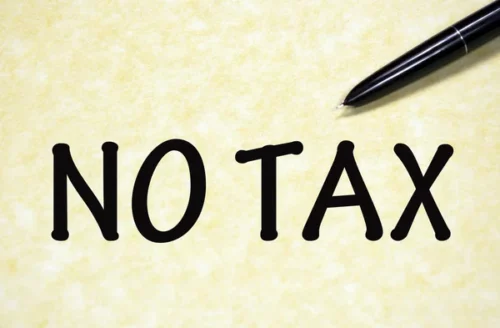Traders are looking to understand why their stocks sometimes become negative. What are the reasons, and does it mean that they owe money?
In this article, we cover why it happens, how to correct it, and the difference between losses in share trading and a negative brokerage account.
What Happens if My Stocks Go Negative?
A stock’s price cannot go negative. The least it can fall to is zero.
That can happen if the company goes bankrupt, but it is very rare.
It usually occurs only with penny stocks, which are high-risk, non-established businesses.
When traders lose money in securities, their brokerage account app, website, or other interfaces might show a negative value.
This does not, however, mean there is a problem with their account.
Cash accounts can never go negative due to share transactions (more on this later).

Moreover, even the loss depicted will materialize only when the securities are sold.
Until then, the negative value displayed is merely notional.
For example, it is possible to simply hold those shares for a longer period in the hope that they would again go above the purchase price.
But what does this negative value mean, then? Will the investor owe money to someone for the amount? Are there any taxes to be paid?
We cover all of this in the sections that follow.
Accounts can go negative, but due to other reasons, which will also be explained towards the end.
Do You Owe Money if a Stock Goes Negative?
No, money is not owed to anyone for a security in the red.
Moreover, as mentioned earlier, an individual stock can never actually go below zero.
The negative value visible just shows that its price has fallen lower than what it was purchased for.
At worst, the trader can lose their entire investment in a security, but they will not end up owing anything.
This is, of course, assuming that the share was not initially bought using borrowed money or on margin.
We explain what this means in the next section.
Can I Lose More Money Than I Invest in Stocks?
Yes, it is possible to lose more than the invested amount, but only while using a margin account.
These accounts allow traders to buy and sell securities by borrowing money from their brokers.
This facility is provided in lieu of interest charges and a certain minimum coverage amount in the investor’s account.
Just like any other loan, the collateral is meant to cover losses (at least partially).
The Financial Industry Regulatory Authority (FINRA) mandates maintaining cash equivalent to at least 25% of the market value of the stock portfolio bought through margin trading.
If such transactions lose money, the interest charges can add on to the loss and end up costing the trader more than the initial invested sum.

Moreover, margin accounts allow certain stock trading strategies, such as short selling.
This is a process where folks can sell shares without owning them (hoping that their price declines and can be bought later at a lower value).
There could potentially be limitless losses in this method if the stock prices start to rise up against expectations.
Cash accounts, on the other hand, do not allow margin trading or short selling.
Therefore, it is impossible to lose more money than invested in this case.
Should I Sell My Losing Stocks?
If the fundamental or technical indicators of a share are not well, it might be prudent to sell a losing stock rather than continue to hold it.
The key to deciding is to understand what is causing the fall, and there could be two possibilities.
Firstly, there might be an overall stock market decline or external events that are causing the drop.
If such factors are temporary and the fundamentals of the firm remain strong, traders might find holding on to be a better bet.
On the other hand, if there has been a permanent or long-term change in the market, it would perhaps be best to limit losses and reinvest elsewhere.
The second possibility is that the fall is being caused due to poor business performance.
In such cases, it is usually best to sell securities rather than keep them.
It is often difficult to isolate the exact cause when a stock declines, and it could even be happening due to a combination of several factors.
Traders often develop their own strategies and instincts about what to do in such situations.
For example, they might look at other indicators apart from price drops to assess the direction of market movement.
Moreover, they can opt to build a diversified portfolio so that any individual stock loss does not impact their overall returns significantly.
Do You Pay Taxes on Stock Losses?
No, there are no taxes to be paid on stock losses. In fact, it is quite the opposite.
They become deductible from any gains made and can help reduce the tax burden.
This is done in a two-step manner.
Firstly, long-term capital losses are deducted from corresponding gains.
The same is then done for short-term ones as well.

After that, any remaining loss still not deducted can further be subtracted from gains of either type.
Let’s explain this with an example. Assume that for a trader in a particular year:
- Short term gain = $1,000 and loss = $1,300
- Long term profit = $500 and decline = $100
Net loss in the short-term segment = $1,000 – $1,300 = ($3,00).
For the long term, there is a net profit, as given by $500 – $100 = $400.
Net losses can now be deducted from remaining gains, i.e.:
$400 – $300 = $100
Hence, the investor is liable to pay taxes only on the remaining $100.
This is their overall profit on the year’s share transactions.
Moreover, the amount will be taxed at the applicable long-term capital gains rate because the remaining profit was from that bucket.
The applicable tax for it is currently 20%, with an additional 3.8% depending on the modified adjusted gross income.
If it was otherwise, the tax percentage could have been as high as 40.8%.
How Much Stock Loss Can You Write Off?
If the overall returns from stocks in a particular year after this calculation are negative, the remaining value might also be written off.
There is a provision to reduce up to a $3,000 loss from other kinds of earnings.
This deduction could be made against income through business, salary, any interest generated through other investments, and so on.
For those who use married filing, the sum that can be deducted is restricted to $1,500 each.
If the loss is beyond even this amount, it may be carried forward in subsequent years for deductions as well.
Why Is My Stock Account Negative?
As mentioned earlier, cash accounts do not go negative due to sale and purchase transactions.
There are two possible reasons why such an account might go negative:
- A recent deposit was rejected
- A fee was applied to it.
Let’s look at both causes in detail below.
Deposit Rejected
In order to trade in a cash account, it is necessary to first have money equivalent to the value of the desired stock purchased in it.
For this, a deposit needs to be made from the investor’s bank to the brokerage firm.

At times, the transaction might get rejected. There could be many reasons for this, including the following:
- Transfer Declined (by the trader’s bank)
- Insufficient Funds
- Incorrect details during transfer (Wrong account number or type etc.)
Note that a reversal fee may also be charged for such failed transactions, making the account go even further in the red.
When this happens, the broker might have already allowed the trader to buy stocks before the deposit failed.
Hence, the account value would have turned negative.
When this happens, further transactions of the stocks bought may not be allowed.
The account will be put under a 90-day freeze to ensure that cash is deposited to cover the position.
During this period, other transactions will need to be fully paid up in cash.
It can easily be rectified by reinitiating the deposit with the correct details and requisite funds.
In most cases, the freeze would be received almost immediately.
Broker Charges
Brokerage firms may place several types of charges on an account.
Some common examples include:
- Trade commissions
- Transaction Fees
- Extended Hours Charges
- Regulatory Fees
- Payment for Order Flow (PFOF)
When the cash position in the account is unable to cover such a charge being applied, it can go into a negative balance.
In this situation, it is important to deposit the required amount as quickly as possible.
Otherwise, the broker is at liberty to sell some of your positions and cover their payments.
Final Thoughts
Individual stock prices can move up or down, but they can never fall below zero.
What you see as negative in a trading account is merely the security going under its purchase level.
When share prices go down, investors can choose to either hold stocks or sell them off.
An analysis of the business’s fundamentals and technical can give clues as to which option might be better.
As far as cash accounts go, stock drops do not cause them to go negative.
There are only two possible reasons for a cash account showing below zero: a reversed deposit or a charge applied to it.
On the other hand, margin accounts can go negative, which is why they need to carry collateral at all times.
FINRA regulates such trades and has mandated that at least 25% of the purchase value needs to be kept in holding.


 Tags:
Tags:










